Samsung OLED 48 S90D or S94D is the smallest model in this series and we had the opportunity to check out what it can do. At first glance, it’s clear that it handles details in dark scenes excellently, as expected from an OLED. It’s worth mentioning that the 48-inch version differs from the larger models. The brightness is slightly lower, and the panel has a satin finish instead of a glossy one. During the day, this may affect image perception. However, regardless of the variant, OLED always makes an impression. The black depth is incredible and the contrast makes even the most demanding scenes look cinematic. When it comes to high-quality materials, this TV literally shines – bright elements in dark frames literally jump off the screen. The factory colour settings could be better, but after calibration, the TV reveals its full potential. While watching from different spots in the room, we noticed that the wide viewing angles work well – the image remains sharp and full of details, even when viewed from the side. The Tizen system proved to be user-friendly – apps like Netflix and Prime Video were at our fingertips. A few less popular apps are missing, which could be a downside, but it wasn’t an issue for us. The interface itself operated smoothly, with no stutters. When watching sports and dynamic films, the TV showed what it’s capable of. The 144 Hz panel eliminates motion blur, and fast actions are displayed smoothly and without interruptions. What is gaming on this TV like? It’s simply pure enjoyment. Low input lag and support for 144 Hz made every gaming session responsive and fluid, whether we were playing dynamic FPS titles or more laid-back strategy games. Samsung OLED 48' S90D/S94D is a great choice for those looking for a smaller TV with excellent picture quality and extra features for gamers. It’s not without compromises, but in everyday use, it performs really well. For us, it’s a compact device that proves that size doesn’t always matter.
- Matching (Score)
- Our verdict
- TV appearance
- Where to buy
- Contrast and black detail
- HDR effect quality
- Factory color reproduction
- Color reproduction after calibration
- Smoothness of tonal transitions
- Image scaling and smoothness of tonal transitions
- Blur and motion smoothness
- Console compatibility and gaming features
- Input lag
- Compatibility with PC
- Viewing angles
- TV efficiency during daytime
- Details about the matrix
- TV features
- Apps
- Playing files from USB
- Sound
Samsung S90D / S94D 48" (WRGB OLED) vs Samsung U8000F (VA)
Direct compare
S90D / S94D
U8000F / U8092F
Available screen sizes: 48”

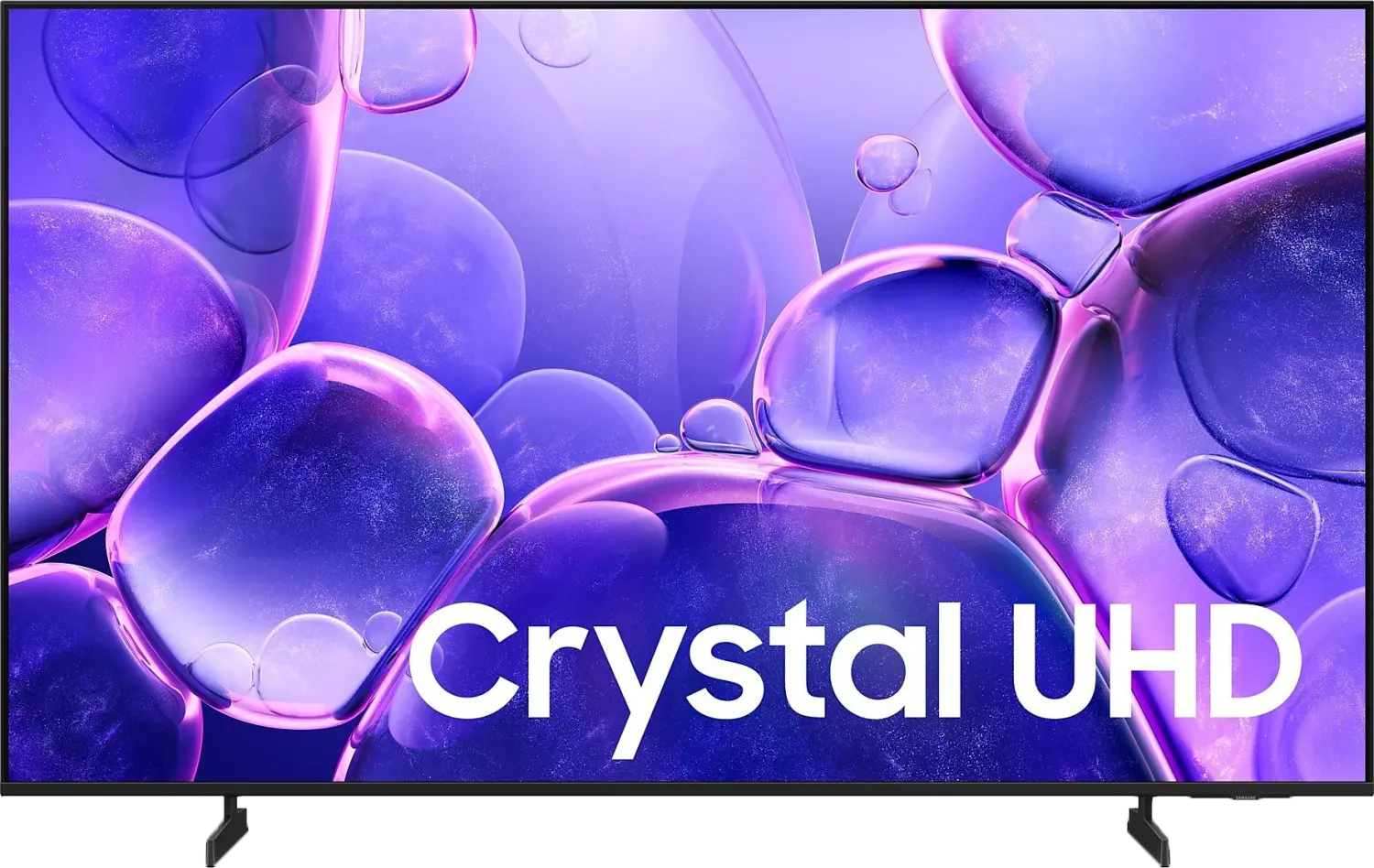
Panel type: WRGB OLED
Resolution: 3840x2160
System: Tizen
Model year: 2024
Complete the survey to find out the result

Panel type: LCD IPS
Resolution: 3840x2160
System: Tizen
Model year: 2025
Complete the survey to find out the result

Overall rating
7.9
5.7
Movies and series in UHD quality
8.0
5.7
Classic TV, YouTube
8.6
5.9
Sports broadcasts (TV and apps)
8.4
5.5
Gaming on console
9.4
6.5
TV as a computer monitor
8.6
6.0
Watching in bright light
5.4
3.8
Utility functions
7.4
5.3
Apps
8.7
8.7
Sound quality
6.8
5.7
Complete the survey to find out what fits your preferences
Advantages
Perfect black
Great for 4K HDR content
Excellent for gamers - 144hz, HDMI 2.1, low input lag.
Advanced and smooth Tizen system
Multifunctional solar remote
Great blacks and contrast (VA panel version)
Advanced Smart system: Tizen
Excellent for text work - displays fonts beautifully
Basic features for gamers - VRR and ALLM
Low input lag
Disadvantages
Worse brightness than larger counterparts
Missing Dolby Vision and DTS:X
Low brightness
Worse viewing angles than the version with an IPS panel (Obvious, isn't it? 😉)
Infrared remote
Inferior appearance compared to its predecessor
Our verdict
Samsung U8000F with a VA panel is a television that can pleasantly surprise in its class – of course, if we know what to expect from it. The greatest strength of this variant is definitely the quality of blacks. Compared to the version with an IPS panel, the difference is huge – the image gains depth, contrast looks significantly better, and evening movie sessions no longer resemble watching content through a grey filter. For a device from the budget segment, this is really a nice surprise. Additionally, we have the proven Tizen system, which not only runs smoothly but also offers access to a full range of applications, support for SmartThings, and voice assistant (via an app). The PC mode and console connection work flawlessly – fonts are clear and readable. Plus, there are basic features for gamers, such as VRR and ALLM, which – although they won’t turn this television into an esports machine – are perfectly adequate for occasional gaming.
Of course, like any construction in this budget, the U8000F with a VA panel also has its limitations. Viewing angles are not its strong suit – watching the image from the side reveals a drop in quality. However, it’s hard to regard this as a serious drawback – because you gain some advantages elsewhere. Better blacks always come with a bit less flexibility in setting. When it comes to HDR, we have a rather symbolic approach – the brightness is too low to talk about a true “wow” effect, and the color palette is limited. But let's face it – that’s not the reason you buy such a television. So if you’re planning to purchase the U8000F, we definitely recommend opting for the variant with the VA panel. It’s still a very basic model, but in this version, it offers more than you might expect – especially in terms of black quality. And in this price range, that’s quite a lot.
TV appearance







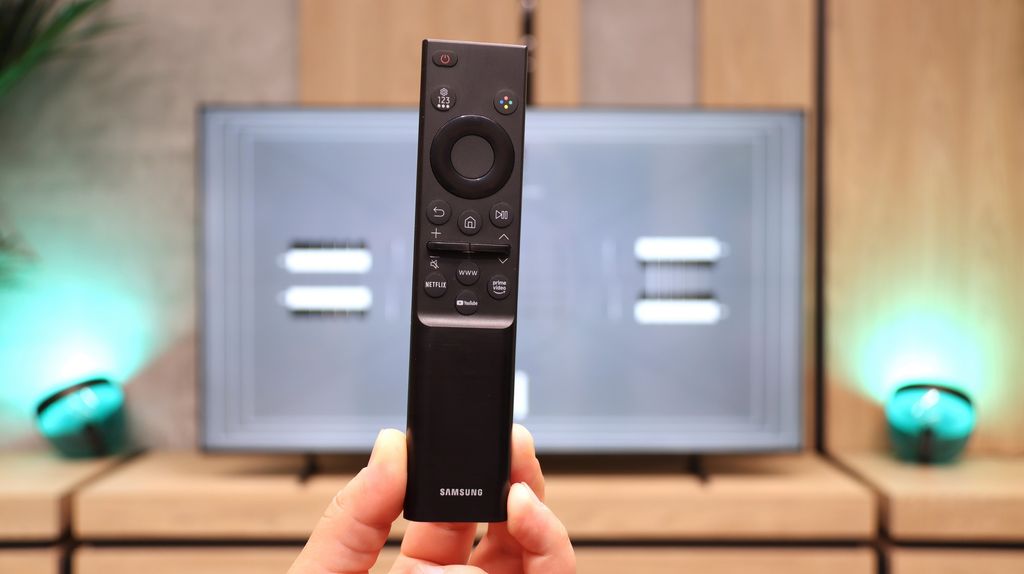
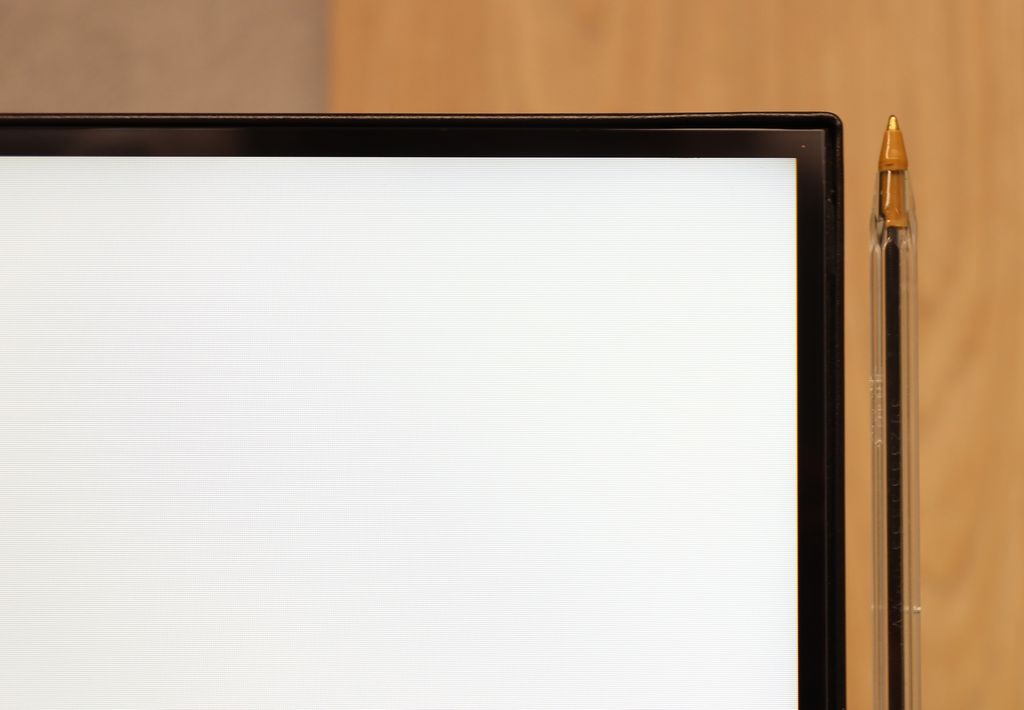
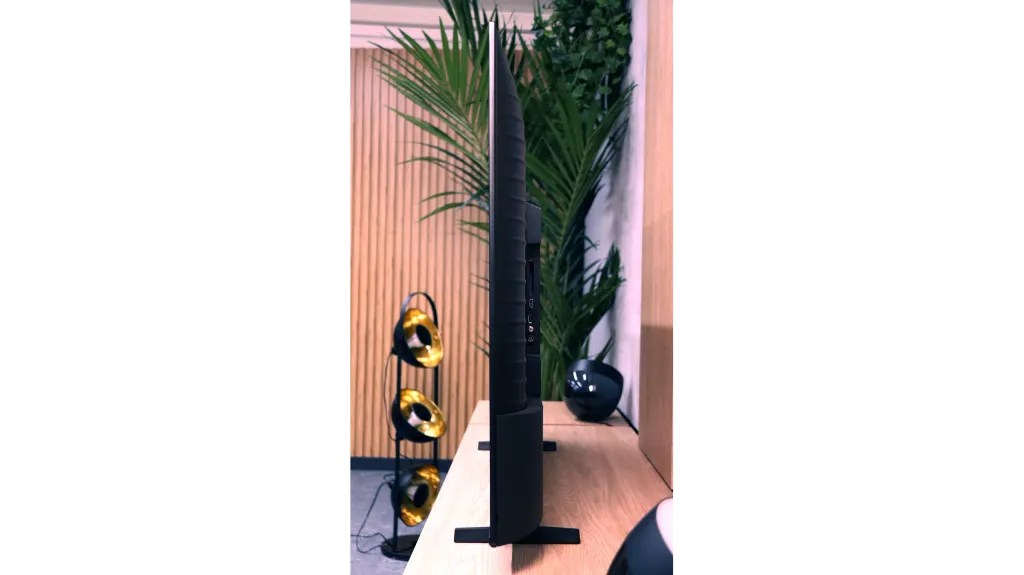
Contrast and black detail
10/10
5.3/10
Local dimming function: No
Contrast:

Result
∞:1

Result
∞:1

Result
∞:1

Result
∞:1

Result
∞:1

Result
4,600:1

Result
4,150:1

Result
3,900:1

Result
3,750:1

Result
3,400:1
Halo effect and black detail visibility:

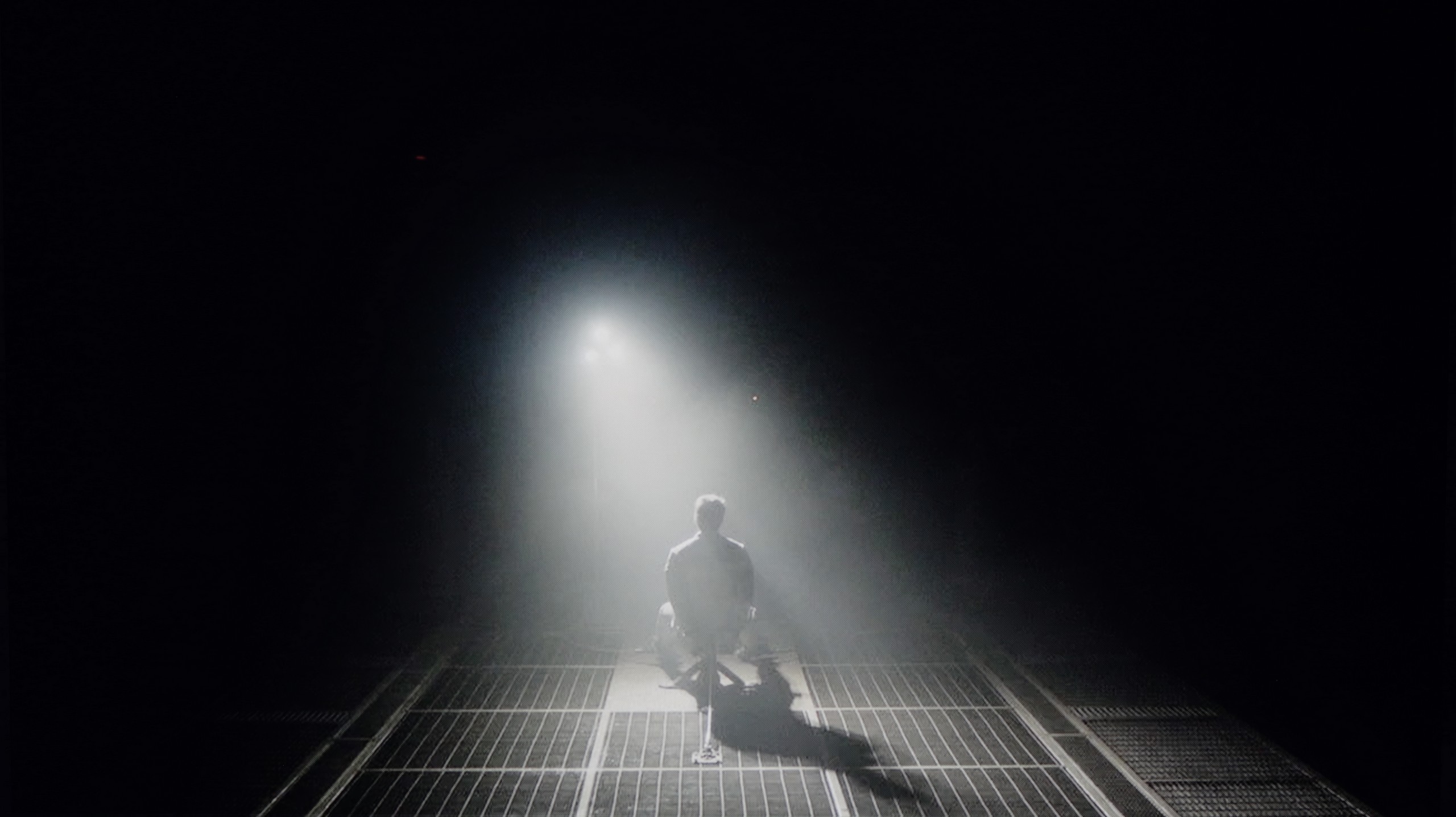
Samsung OLED 48 S90D stands out thanks to the use of an OLED panel, which provides an extremely high contrast, one of its key advantages. OLED technology allows each pixel to emit light independently, resulting in perfectly deep blacks and excellent visibility of details even in the darkest scenes. Unlike traditional LCD screens with backlighting, where black can appear washed out and greyish due to uneven backlighting, OLED ensures that pixels are completely turned off in areas where black should appear. This achieves an impressive level of contrast, making images more vibrant and realistic. An example can be seen in a scene from the film "Oblivion," where the S90D television superbly captures the intense light of the lamp, highlighting details in the bright areas of the image. Meanwhile, in "Sicario 2," the OLED panel accurately reproduces the helicopter lights against a dark background.
It’s worth noting that the test concerns variants with a VA panel, which perform several times better in the categories of black levels and contrast than the 55-inch version equipped with an IPS panel. Thanks to the higher native contrast (although it’s not the top result among VA panels), the tested scenes looked significantly better – without noticeable greyish hues or the typical washed-out shadow effect found in IPS panels. The black levels in the U8092F model can be considered really good and satisfying, especially in this price range. Of course, this is not a design equipped with local dimming, so it’s hard to expect spectacular results in very challenging scenes. On the other hand, we’re talking about a remarkably budget-friendly television that performs quite solidly in its category.
HDR effect quality
6.4/10
3.1/10
Luminance measurements in HDR:

Result
788 nit

Result
807 nit

Result
851 nit

Result
838 nit

Result
372 nit

Result
212 nit

Result
173 nit

Result
265 nit

Result
90 nit

Result
250 nit
Scene from the movie “Pan” (about 2800 nits)


Scene from the movie “Billy Lynn” (about 1100 nits)


Static HDR10


Dynamic: HDR10+
Dynamic: HDR10+


HDR luminance chart:
Samsung U8000F (VA)
HDR luminance
Samsung S90D / S94D 48" (WRGB OLED)
HDR luminance
Luminance of RGB colors
In the tested movie scenes, the Samsung OLED 48 S90D television achieves impressive brightness results, exceeding 800 nits in the first four shots, which can be considered a very good outcome. In the case of the last shot, where a full-screen burst of sunlight is visible, the brightness drops to around 400 nits but still remains at an acceptable level. However, it is worth noting that this model in larger sizes offers higher values, exceeding the "barrier" of 1000 nits. Additionally, speaking of the DCI-P3 colour space coverage value of 97% is an excellent result, which guarantees extremely rich and realistic colour reproduction, further enhancing the picture quality. However, once again it should be remembered that the panel in the 65' variant equipped with a QD-OLED panel will be even better in this aspect. For those hesitating about the size of the S90D model, it is worth noting that larger versions of this television offer a better HDR effect, and consequently, a higher score in our tests.
While the U8000F with its VA panel can still be praised for decent blacks, there are no such accolades when it comes to brightness—particularly in HDR scenes. The television only achieves a maximum of just under 250 nits, which is simply too low to talk about any impressive light effects. Bright elements appear washed out, and scenes that should shine look rather flat. An interesting situation occurred during our testing of a scene from the movie Sicario 2— the screen noticeably darkened, as if the television was trying to hide its limitations in displaying blacks. One might get the impression that the device artificially darkens the image to improve contrast, but in practice, the effect doesn't make much difference, apart from the fact that we see less on the screen. Additionally, there’s the issue of colours—the U8000F doesn’t support a wide colour gamut, so one shouldn’t expect vibrant, saturated hues known from better models. The HDR image here resembles a slightly brightened SDR and... maybe that’s not such a bad thing. For this model, it’s not worth expecting a cinematic experience—better to treat HDR as a modest addition.
Factory color reproduction
7/10
6.5/10


Factory Mode
After calibration
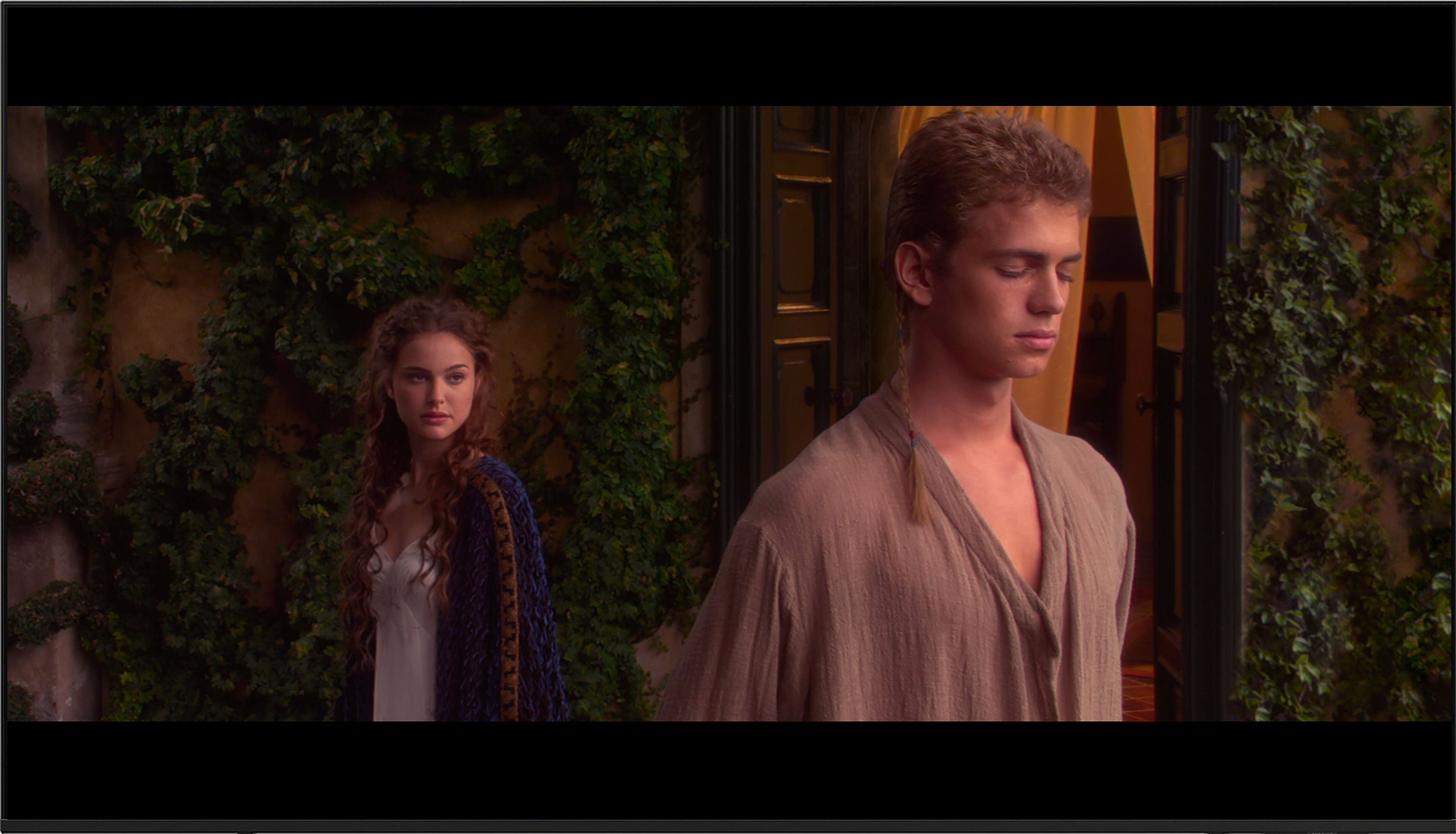
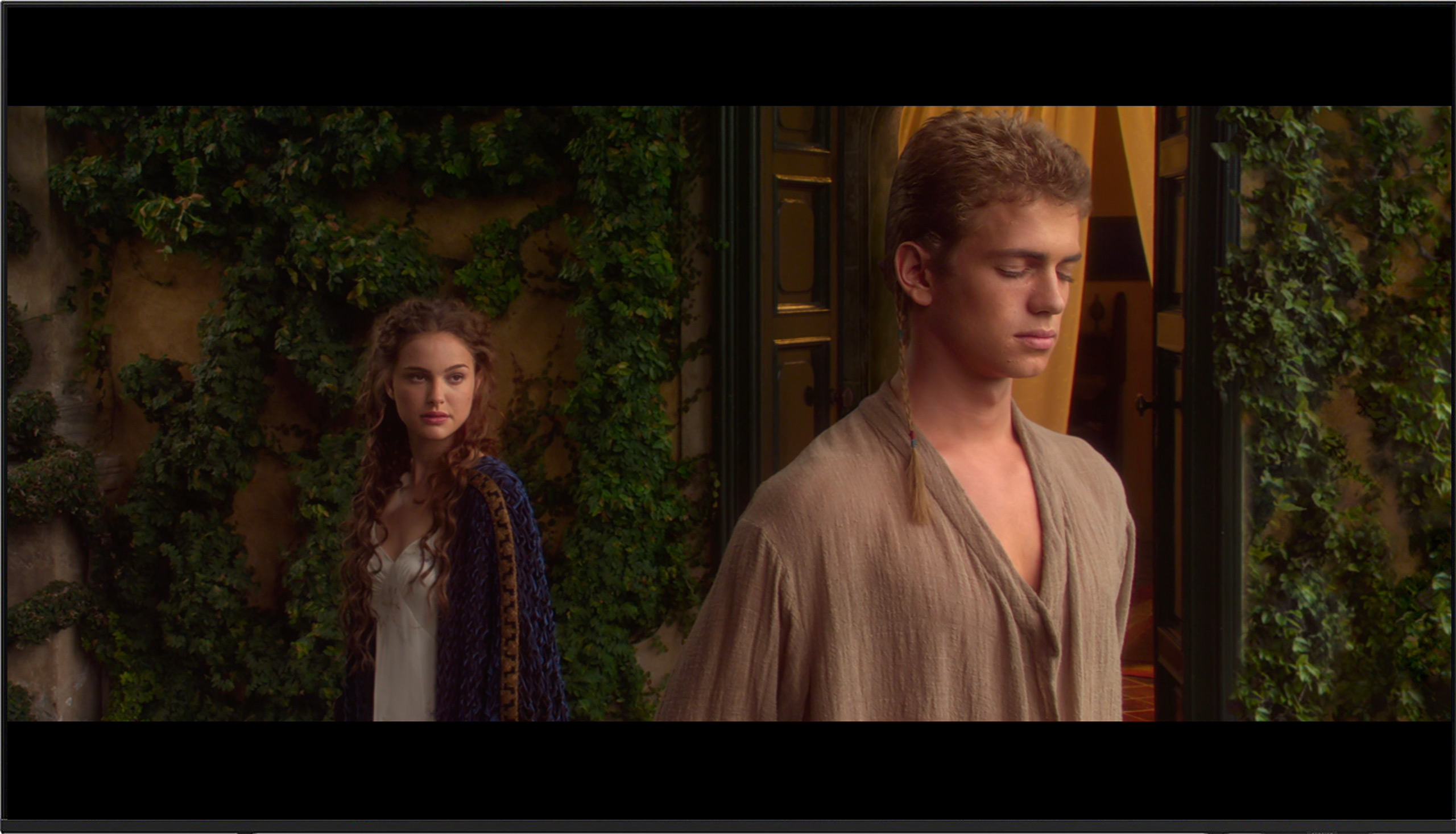
Factory Mode
After calibration
The S90D Samsung TV has been tested in Filmmaker mode, which offers good colour reproduction, although with some imperfections that may be noticeable to more demanding users. This mode may seem a bit too warm, and users who switched from Standard mode may experience a slight shock. It's worth considering that this state of affairs is caused by poor settings, such as white balance, rather than the Filmmaker mode itself. Both in SDR and HDR content, the device exhibits drops in blue, causing colours to appear warmer than they should. In practice, this means that some shades, like sky blue or skin tones, may seem less natural and take on a pinkish or yellowish tint. The Colour Checker test confirms these deviations, showing shifts towards warmer tones. In SDR content, the gamma chart indicates minor fluctuations, resulting in a slightly darker image, especially in the shadows. This may affect the clarity of details in darker scenes. Conversely, in 4K HDR materials, the EOTF curve is above the recommended line, leading to some portions of the image being too bright, which can cause clipping in the brightest areas. Overall, the Samsung S90D presents a solid image straight out of the box, but for the best results, particularly with more demanding content, additional calibration is recommended.
Samsung U8000F has been tested by us in the best picture mode it offers out of the box – that is, Filmmaker Mode. This profile is supposed to theoretically provide a neutral, cinematic image, free of unnecessary enhancements and artificial beautifications. In the case of SDR content – mainly in HD or SD resolution – the television already presented itself surprisingly reasonably right out of the box. The only noticeable imperfection was brightness management. The gamma chart showed some deviations – slight brightening or dimming of certain tones – but in practice, this did not significantly affect the viewing experience. For a television in this segment, it performs quite well.
However, the situation in HDR mode looks significantly weaker. Although white balance was still acceptable, colour errors were very evident. In the Color Checker test, almost every sample was outside the target point, and the image itself appeared unnatural – colours were skewed, sometimes too cool, and at other times simply dull and lifeless. The main issue lies in hardware limitations – the U8000F does not support the wide colour gamut of DCI-P3, so it is physically unable to reproduce the colours that the HDR standard intends. Unfortunately, this is evident in almost every more demanding scene.
Color reproduction after calibration
8.7/10
7.5/10



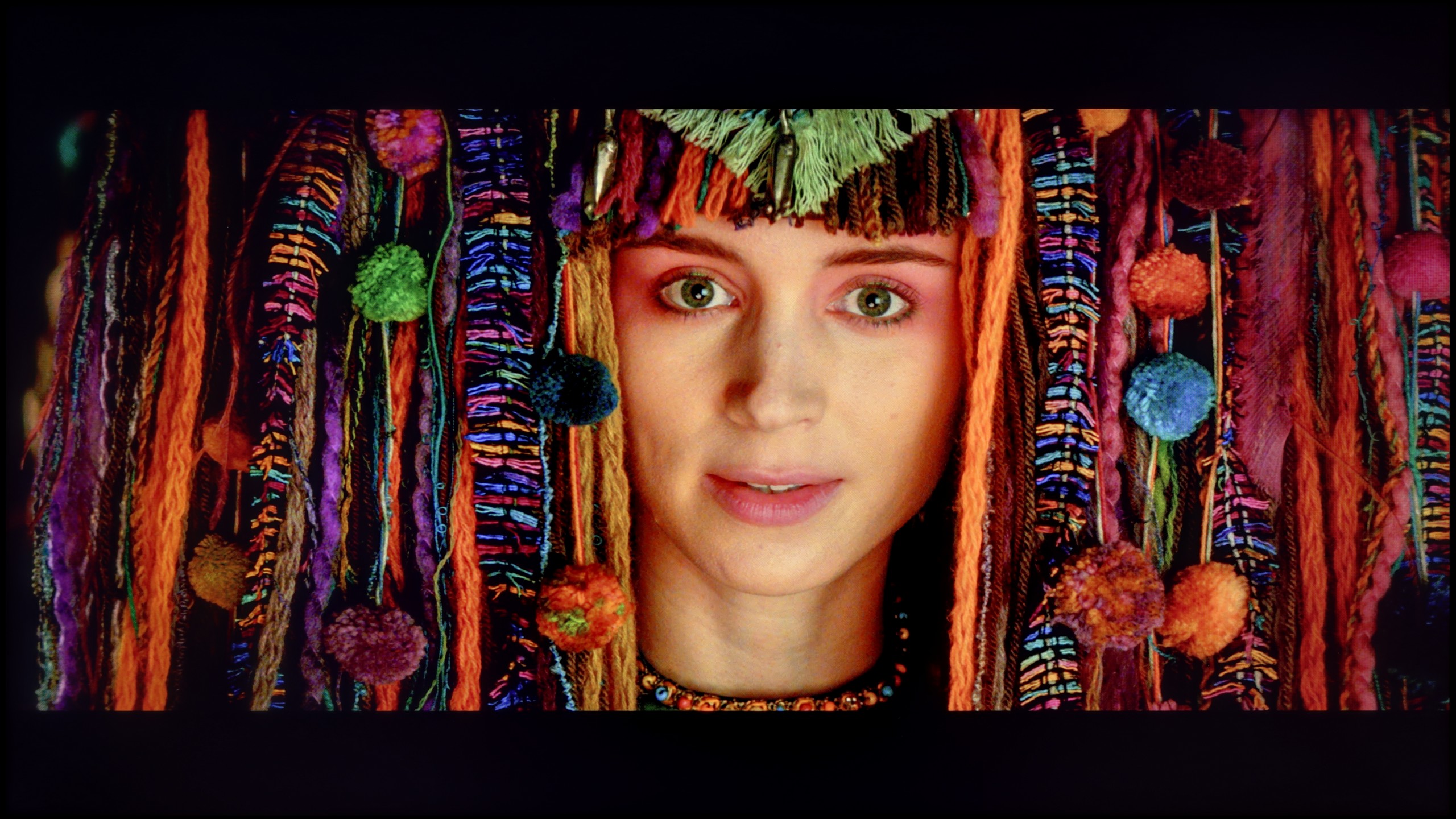
After calibration, the Samsung OLED 48 S90D in movie mode looks even better than one might have assumed. The white balance, for both HD and 4K HDR content, has been improved to near perfection. Although minor errors can still be noticed, they are so minimal that they do not significantly affect the picture quality. Colours are more balanced, which translates into a natural reproduction of details, especially in scenes requiring a precise colour palette. It’s worth noting that this model in the 48' size is equipped with a WOLED panel that has different characteristics compared to larger sizes and has a smaller coverage of a wide colour gamut, not offering as rich colours as, for example, the 65-inch version, which is equipped with a QD-OLED panel.
Contrast has also seen significant improvement. The gamma chart after calibration is much closer to the expected line, providing better balance between the bright and dark portions of the image. The EOTF curve, which showed issues with overexposed scenes before calibration, now shows better results. This effect allows for greater detail retention in bright parts of the image, particularly in HDR material.
Right out of the box, the U8000F offered a pretty decent picture in SDR for its price range. We managed to tweak it a bit further – we reduced a slight purple tint and improved the gamma characteristics, giving it a more natural curve. Despite these adjustments, the TV still has a tendency to overly brighten the brightest details – the gamma chart shows a clear break that cannot be fully corrected.
On the other hand, in HDR mode, it’s noticeably weaker. It's hard to talk about any significant improvement – despite attempts to fine-tune the settings, the picture still presents considerable colour errors. A Delta E exceeding 7 indicates noticeable deviations that we couldn’t effectively reduce. Unfortunately, this is a limitation of the construction itself – the U8000F simply wasn't designed for serious HDR. In daily SDR viewing, it performs quite well, but for HDR content... it’s best not to have overly high expectations.
Smoothness of tonal transitions
7.6/10
9.5/10





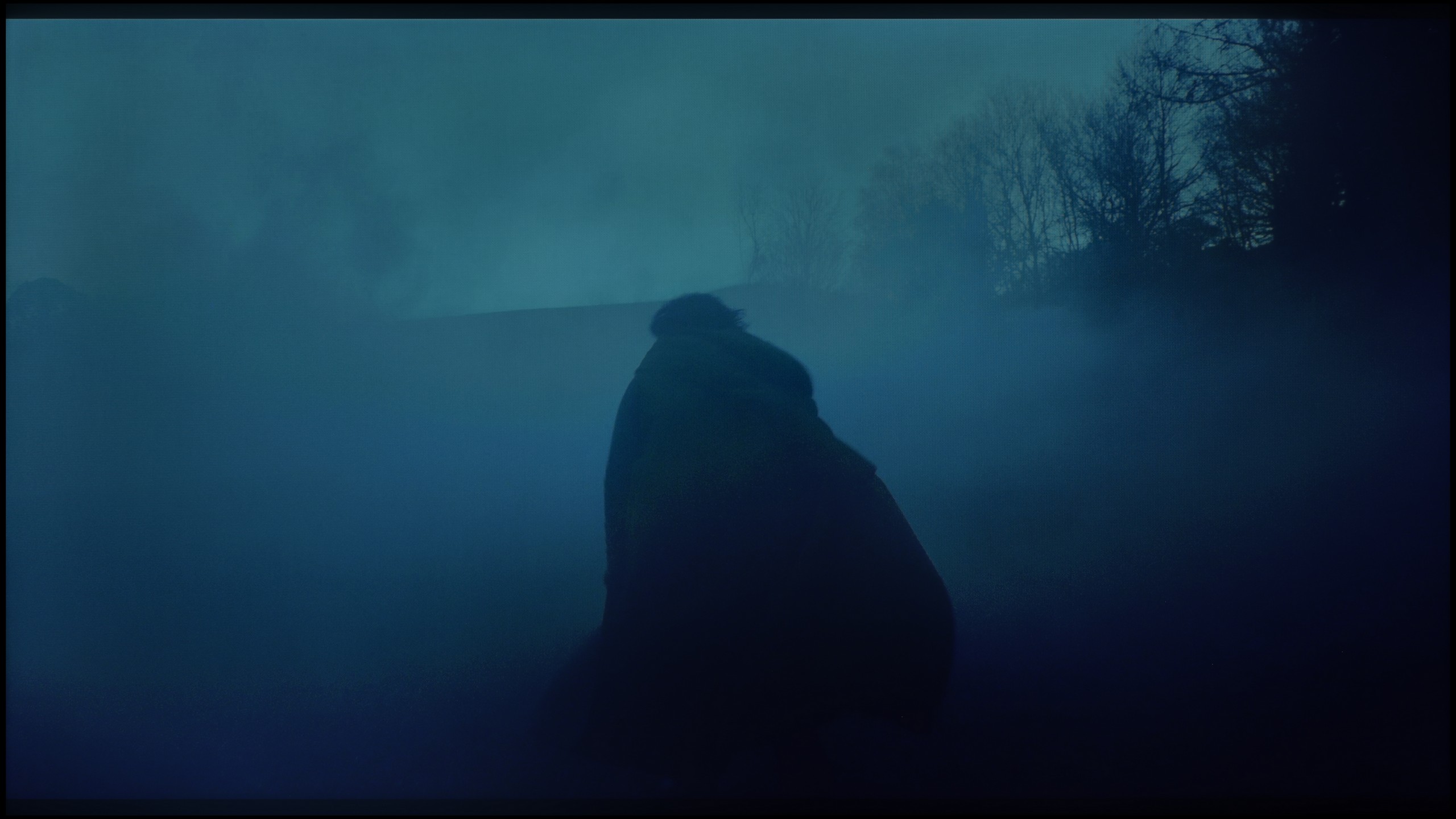






The fluidity of tonal transitions on the Samsung OLED 48 S90D TV is at a good level, although subtle imperfections are visible in places. In most scenes, tonal transitions are smooth and well-reproduced, providing a natural viewing experience. In more demanding sequences, such as a dark coloured sky, slight issues may arise; however, they do not significantly impact the overall visual experience. In the test scene with dominant red hues, slight clipping of the brighter areas can be observed, but it is subtle enough not to interfere with viewing. Overall, the fluidity of tonal transitions on the S90D TV is solid, ensuring a good reception of content.
One of the essential elements affecting the perception of the image is the way in which the television handles tonal transitions – that is, blending colours and shades without clear boundaries. In the case of the Samsung U8092F model, this performed really well. On the test screens, we did not observe any visible banding or disturbances in the colour gradients. The image retains a natural character, without excessive digital interference, which unfortunately tends to be the norm in this class of equipment. Minimal imperfections appeared in very bright sections, but they are practically unnoticed and do not affect the daily use of the television.
Image scaling and smoothness of tonal transitions
7.9/10
5/10
Smooth transition function

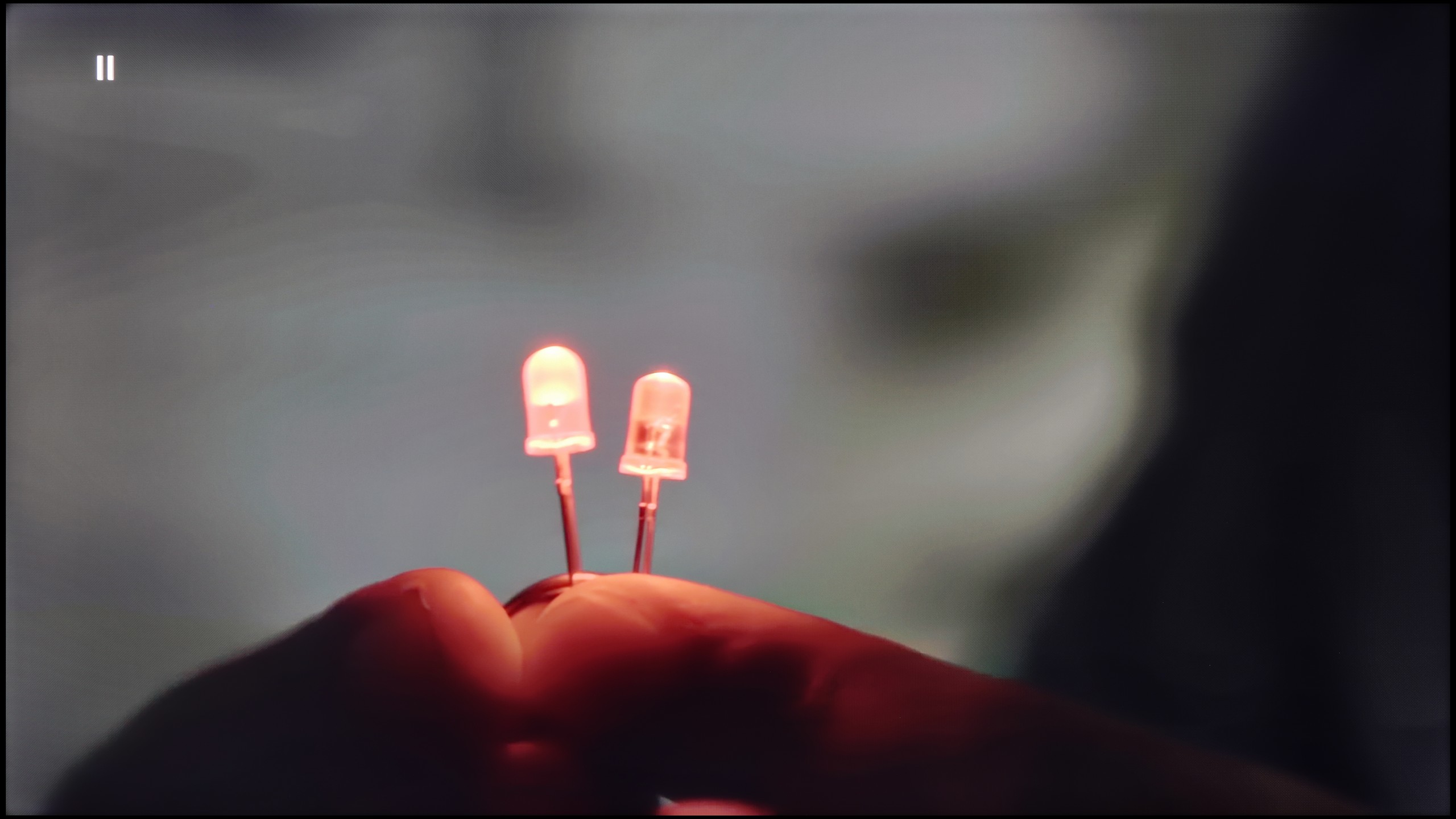
Image without overscan on the SD signal


The Samsung OLED 48 S90D television performs exceptionally well in smoothing tonal transitions. Thanks to the technology used, the transitions between colours are more fluid and natural. It is also possible to utilise the noise reduction feature, which further smooths tonal transitions, which can be useful in some situations. However, it's worth remembering that turning on noise reduction can also lead to the smoothing of desired film grain, which may reduce the cinematic feel of the picture. For this reason, caution is advised when using this feature, as it's better to leave the natural grain that adds character and authenticity to the content being viewed.
Samsung, as always, does not disappoint, and in terms of scaling images from lower resolutions, it performs excellently. The S90D OLED 48 Samsung television effectively processes lower resolutions, as seen in the visible photo. The outline of the model is clear and correct, making it look natural and detailed. Furthermore, the branches of the trees are well reproduced, showing no significant jaggedness that could detract from the image quality. Thanks to effective scaling, even lower resolution materials look attractive on the screen, satisfying users who prefer diverse content sources such as regular antenna/cable television.
When it comes to how the Samsung U8000F handles lower-quality materials, we have to admit that Samsung has made progress compared to its predecessor from last year – the DU7192 model, which theoretically occupies the same place in the lineup. This year’s model is equipped with a feature that improves the smoothness of tonal transitions, which has been implemented much better than last year. Yes, the television still uses quite strong algorithms that can distort details or remove film grain, but still – it can be confidently said that it works effectively. However, not everything has gone perfectly. The U8000F has noticeable issues with slight image stuttering when watching very old content in very low resolution. If someone plans to play their old VHS tape, they must be prepared for the image to look slightly “choppy”.
Blur and motion smoothness
8.5/10
5.5/10

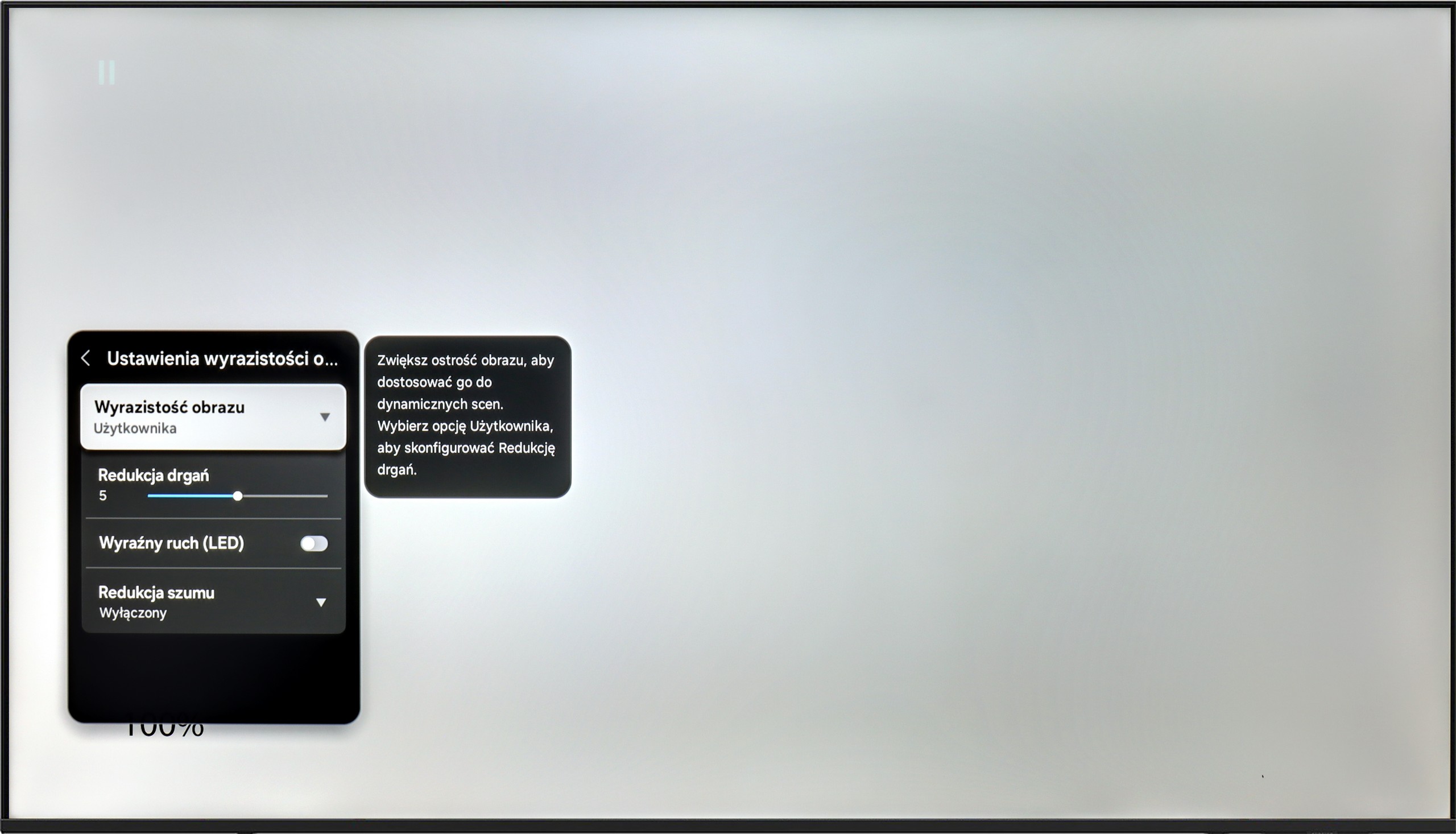
Blur (native resolution, maximum refresh rate):






Blur (BFI function enabled):
Image flickers in this mode
Image flickers in this mode



Smużenie ():
Smużenie (Upłynniacz ruchu 4K@60Hz):
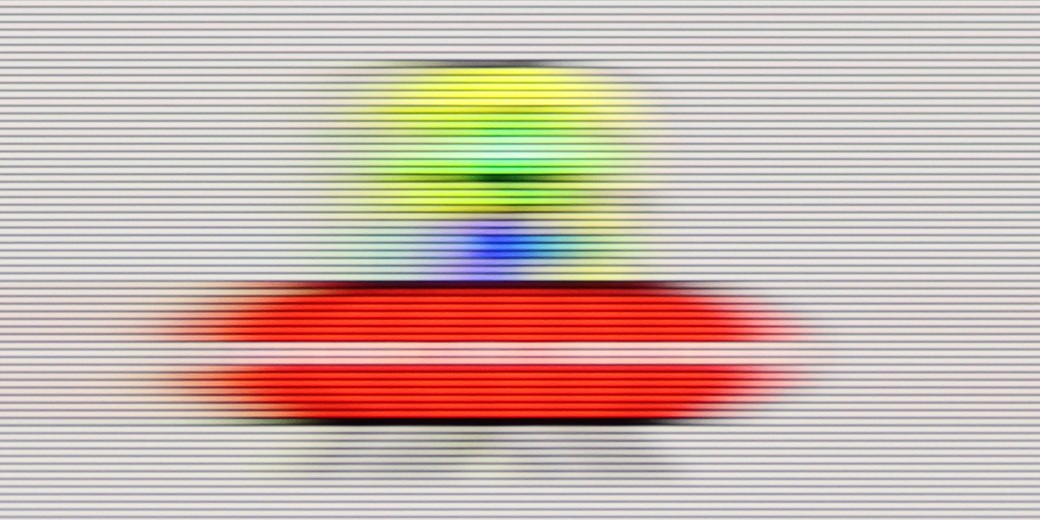
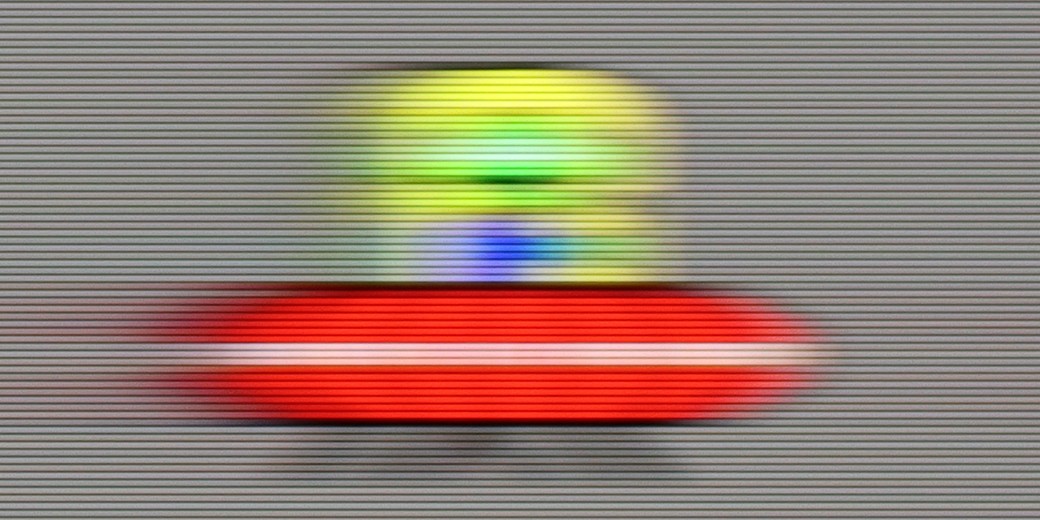
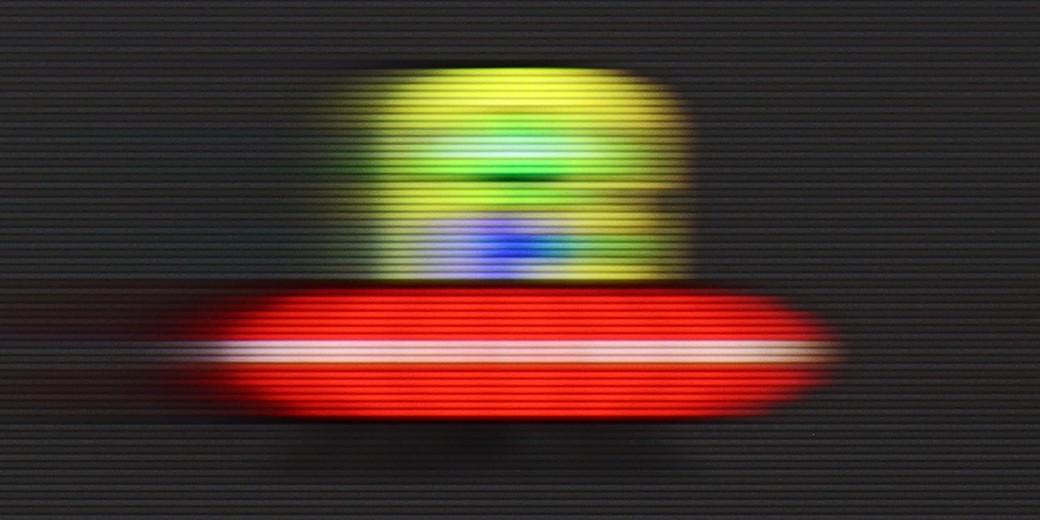
The S90D television is equipped with a 120 Hz panel, with the ability to "overclock" to 144 Hz with the right PC configuration, providing exceptional motion smoothness. Samsung has been offering a variety of image clarity settings on a ten-point scale for years, allowing users to customise the display to their preferences. In the UFO test, thanks to the use of an OLED panel, there's no question of any ghosting. The response time of the pixels is instantaneous and perfectly captures dynamic movements. In this aspect, OLED technology is considered one of the best on the market. The picture is extremely sharp and detailed, even during fast action, making the S90D OLED 48 Samsung television the perfect choice for gamers and sports enthusiasts.
The Samsung U8000F comes with a 60 Hz panel, so right from the start, it's clear that you can't expect miracles. It's simply the standard in this class – sufficient for everyday viewing, but without any fireworks. The TV offers one motion smoothing slider – a function called "Motion Blur Reduction", which allows us to adjust the smoothness of the image in films. Higher settings provide a more "theatrical" and smoothed effect, while lower settings maintain the original character of the film with a slight 24p effect. Interestingly, there is the "LED Clear Motion" feature, or BFI mode – which inserts black frames between the frames of the image to improve motion sharpness. However, in practice, the screen flickers significantly when this is activated, and it's best to treat this as more of an experiment rather than something that genuinely improves the gaming experience.
Console compatibility and gaming features
9.5/10
4/10
- ALLM
- VRR
- VRR range48 - 144Hz48 - 60Hz
- Dolby Vision Game Mode
- Correct implementation of HGIG
- 1080p@120Hz
- 1440p@120Hz
- 4K@120Hz
- Game bar

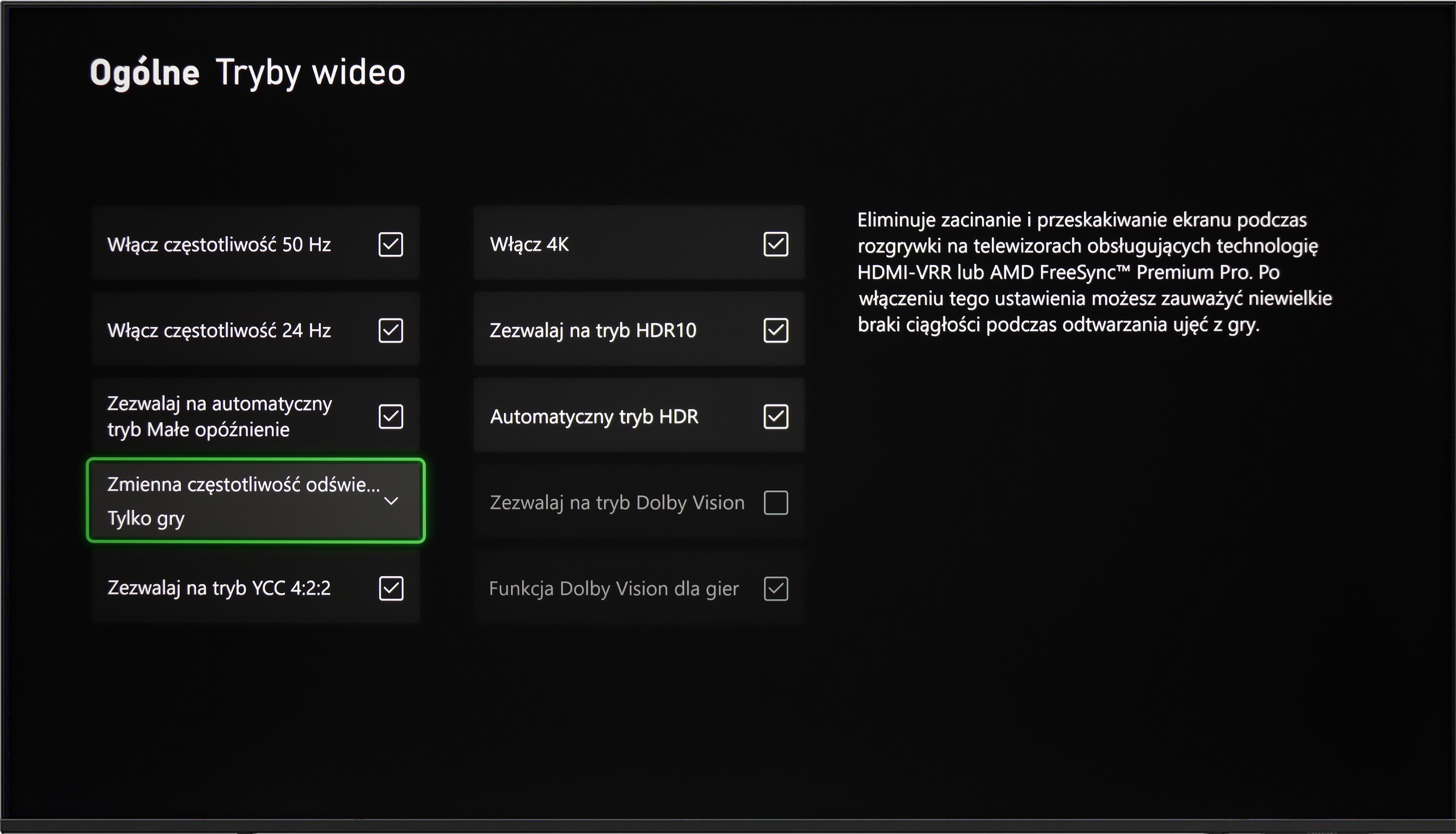

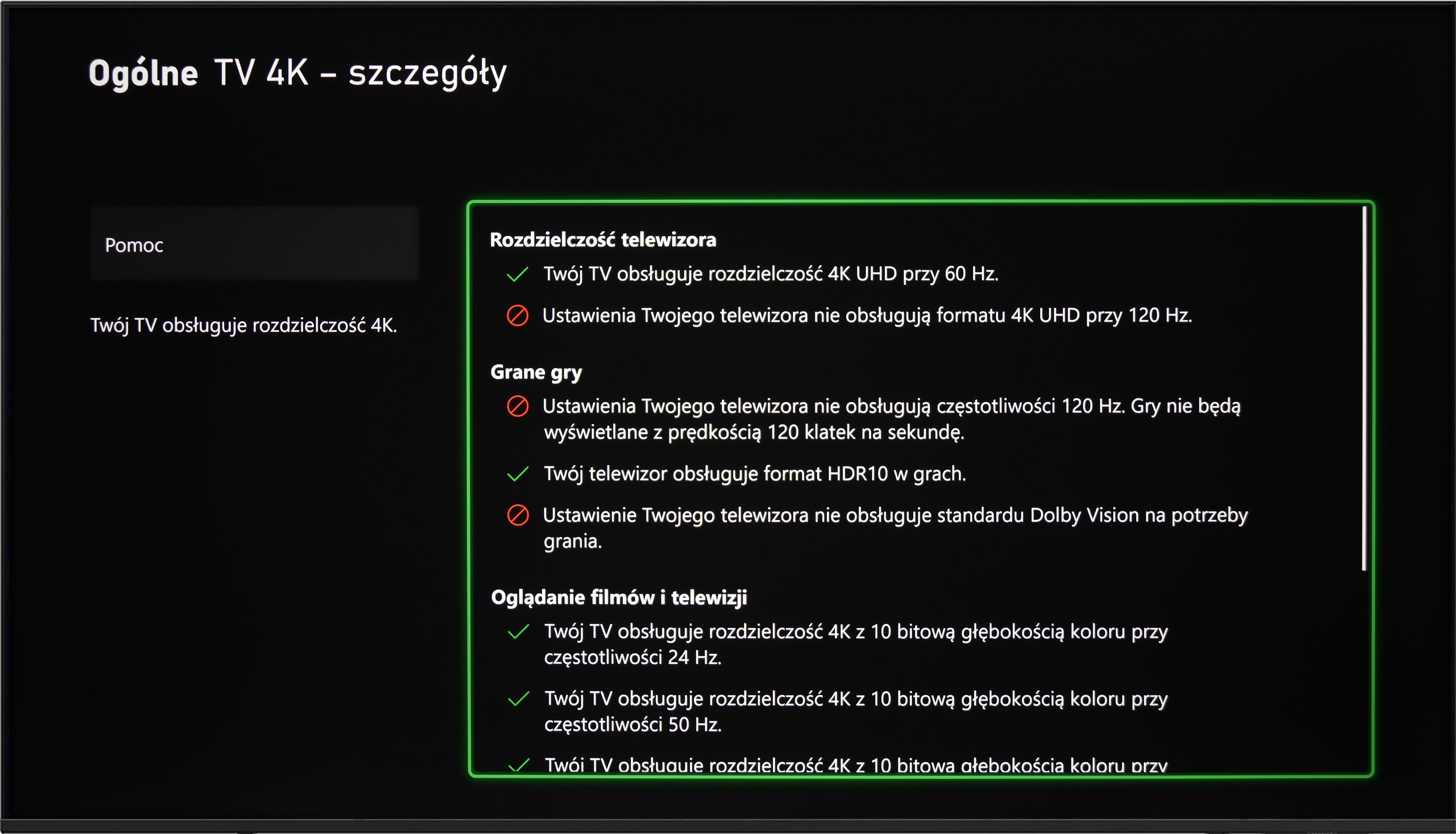

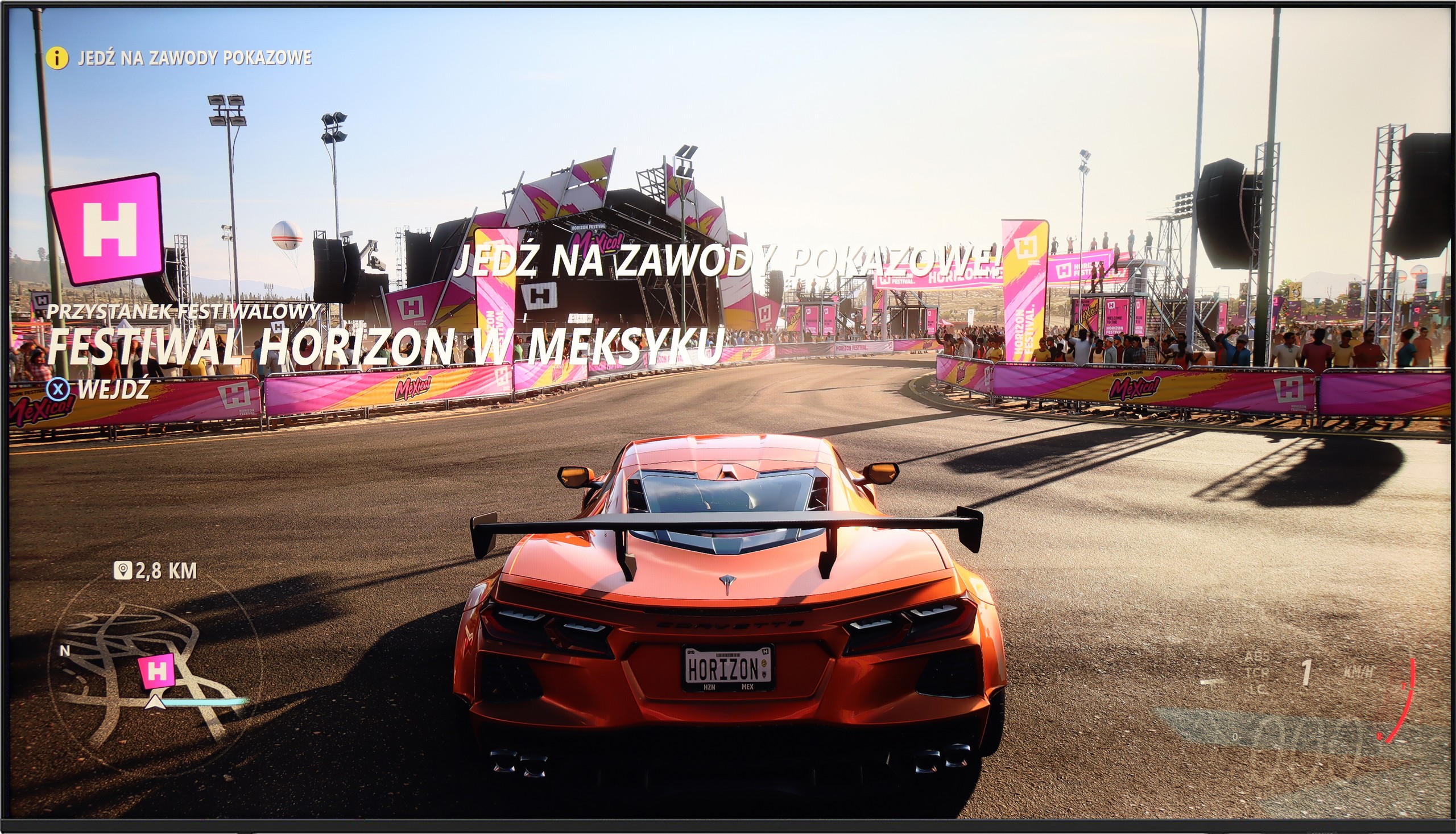


The Samsung OLED 48 S90D television is well-suited to the needs of gamers, offering four HDMI 2.1 ports that support features such as Auto Low Latency Mode (ALLM), Variable Refresh Rate (VRR), and HGIG (HDR Gaming Interest Group). With these technologies, gamers can enjoy smoother gameplay and faster on-screen response, significantly enhancing comfort during long gaming sessions. Additionally, the Game Bar feature allows for easy adjustment of settings, such as aspect ratios, which can be particularly useful in different types of games. For PC users, the television offers an impressive refresh rate of 144Hz, and Nvidia and AMD graphics cards support G-Sync and FreeSync, further improving image smoothness. Although the lack of Dolby Vision support may be a drawback, it's worth noting that in gaming, this technology is not as widely used as in films. Nevertheless, the S90D still offers excellent features for gamers, making it a great choice for those seeking high-quality visuals and advanced gaming technologies.
Samsung U8000F offers a basic set of features for gamers, which can still prove sufficient for less demanding users. Here we have an automatic gaming mode – when a game is launched on the console, the TV switches to low-latency mode by itself, significantly improving response time. We also find the VRR feature, or variable refresh rate, which operates in the range of 48 to 60 Hz. This means that both Xbox and PS5 will not produce the 'tearing' effect on the screen – as long as we stay within this range.
Unfortunately, that's about it when it comes to advantages. Add-ons like Game Bar or higher refresh rates are reserved for higher models of Samsung from the 2025 line. In theory, the TV also supports the HGiG feature, which should adjust the HDR image to the intentions of game developers. Unfortunately – despite this feature appearing in advertising brochures and store materials – its setup on the Xbox console turned out, in practice, to be... impossible.
Input lag
10/10
10/10
SDR
HDR
Dolby Vision
Samsung's OLED features an almost reference-level low input lag, regardless of resolution and refresh rate, in both SDR and HDR modes. Results around 10 ms are truly impressive and significantly enhance the gaming experience. Such a low input lag ensures immediate response to on-screen actions, which is crucial in fast-paced games where every millisecond counts. This allows users to enjoy smoothness and precision, making the S90D TV an excellent choice for those who prioritise gaming performance.
The Samsung U8092F performed phenomenally in our input lag tests. Regardless of the resolution, the results were very low, which is truly impressive for this price segment. One can confidently say that gaming on this TV will not cause frustration due to significant delays between what we do on the controller and what we see on the screen. For most gamers, even the more demanding ones, this result should be more than satisfactory.
Compatibility with PC
8.6/10
6/10


The Samsung OLED 48 S90D TV works perfectly with a PC. Fonts are clearly visible, making it easier to read text and use applications. Additionally, it supports chroma 4:4:4 at 4K resolution and a refresh rate of 144 Hz, ensuring full colour reproduction and image sharpness. It's worth noting that the input lag of just 5 ms is extremely advantageous, particularly for gamers and professionals working with graphics. With such low latencies, using the TV as a monitor becomes a pleasure, allowing for comfortable and responsive work. The S90D TV is an excellent choice for users seeking performance and quality in everyday computer use.
Working on the computer with this television is a true pleasure. The Samsung U8092F supports chroma 4:4:4, and even though it has a VA panel, the readability of text is very, very good. The television is also suitable for occasional PC gaming, mainly due to its low input lag. However, it should be noted that the G-Sync feature does not work on this model, which is strange because VRR worked without issue on the console.
Viewing angles
7.2/10
3.7/10
The viewing angles on the S90D television, thanks to OLED technology, are unmatched. OLED offers excellent colour and contrast reproduction, even at wide viewing angles, making the picture remain sharp and vibrant from almost any perspective. Users can enjoy a consistent visual experience, regardless of where they are watching the screen.
TV efficiency during daytime
5.4/10
3.8/10

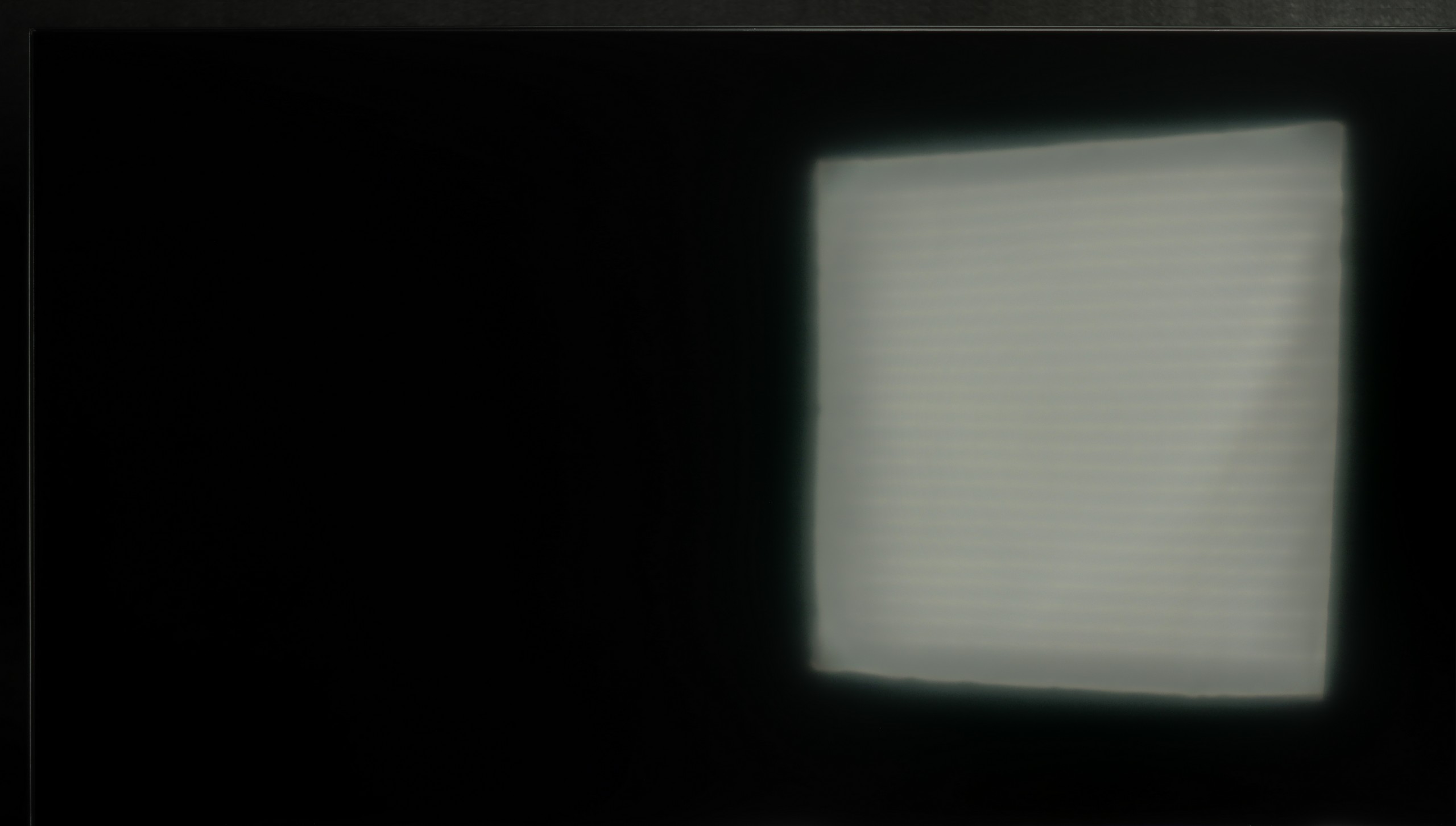

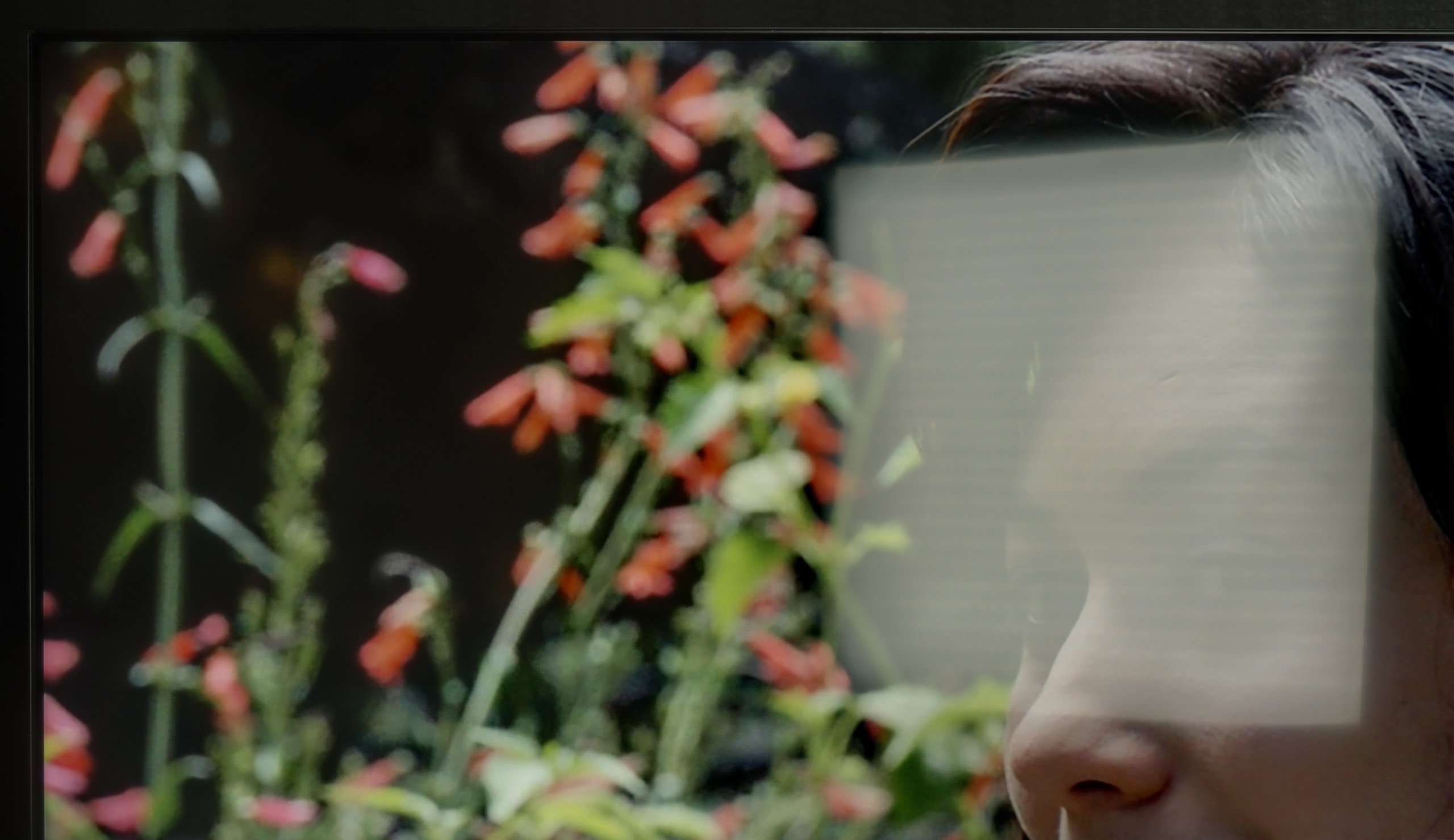
Matrix brightness
Average luminance SDR
Samsung U8000F (VA): 204 cd/m2
Samsung S90D / S94D 48" (WRGB OLED): 320 cd/m2
While watching during the day, the Samsung OLED 48 S90D performs very well, achieving an average brightness of around 320 nits, which is a decent result for OLED technology in a 48-inch size. Thanks to the satin panel, reflection suppression is at a reasonable level, allowing for comfortable viewing even in bright rooms. The only noticeable downside of this technology, and not the television itself, is the brightness at 100% white screen fill. In such conditions, OLED may struggle to achieve extremely high brightness. Situations like this can be observed when we want to watch winter sports, e.g., ski jumping.
Thanks to the satin finish of the Samsung U8092F panel, it handles reflection reduction quite well. The screen doesn't act like a mirror, and the colours – given the capabilities of this class of device – remain fairly saturated, even in somewhat brighter conditions. Unfortunately, the finish alone won't perform miracles. The TV is simply too dark to effectively cut through very challenging lighting conditions. If we place it opposite a light source (e.g. a large window or a strong lamp) – unfortunately, one must reckon with the fact that not everything will be clearly visible on it.
Details about the matrix
Subpixel Structure:

Panel uniformity and thermal imaging:

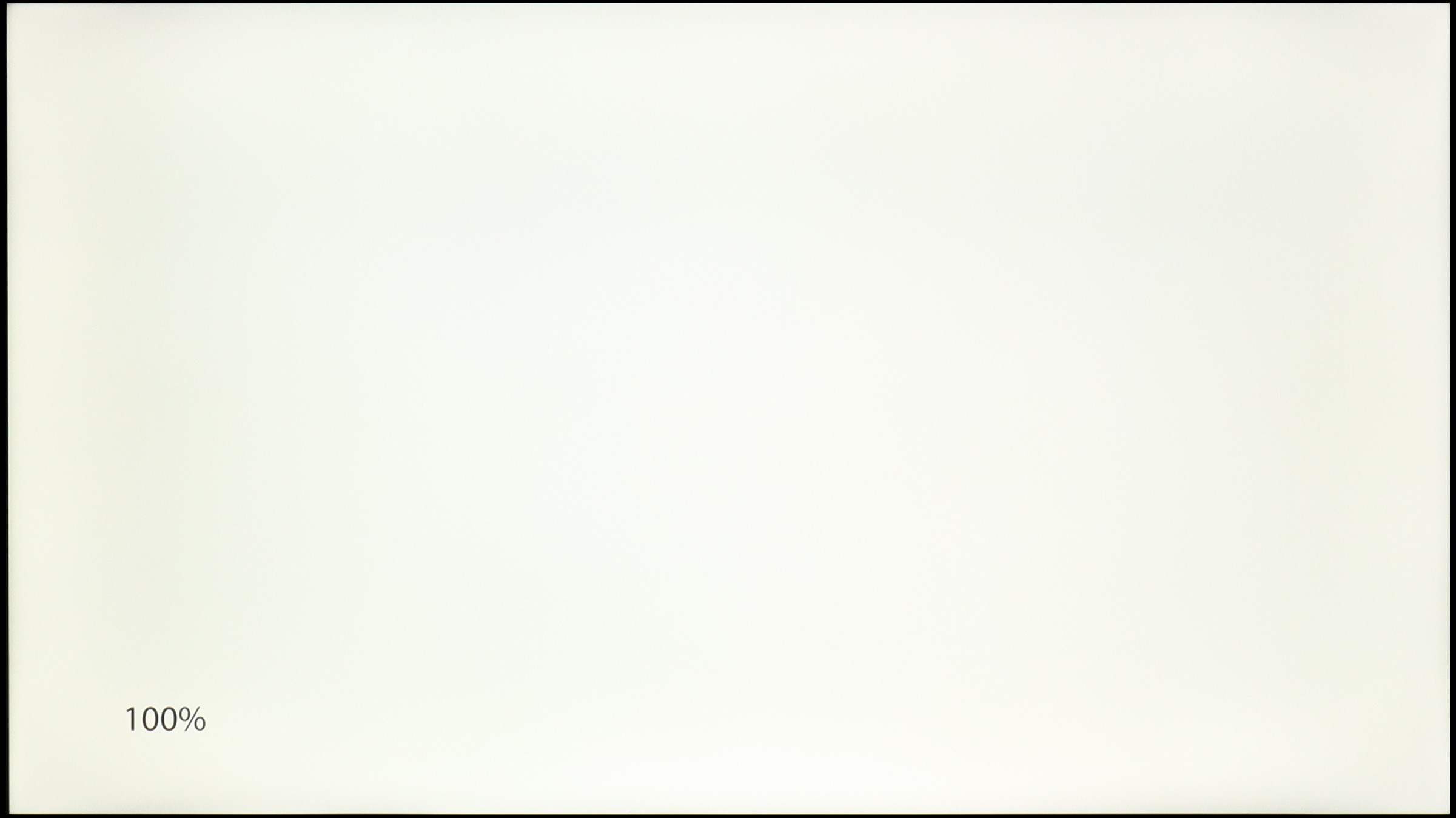
TV features
7.4/10
5.3/10
- HDMI inputs0 x HDMI 2.0, 4 x HDMI 2.1 48Gbps3 x HDMI 2.0, 0 x HDMI 2.1
- OutputsToslink (Optical audio), eARC (HDMI), ARC (HDMI)eARC (HDMI), ARC (HDMI)
- Network InterfacesWi-Fi 2.4GHz, Wi-Fi 5GHz, Ethernet (LAN) 100MbpsWi-Fi 2.4GHz, Wi-Fi 5GHz, Ethernet (LAN) 100Mbps
- TV receptionDVB-T, DVB-T2, DVB-S, DVB-S2, DVB-CDVB-T, DVB-T2, DVB-S, DVB-S2, DVB-C
Classic features:
- Recording to USB (terrestrial TV)
- Recording programming
- Picture in Picture (PiP)
- RF remote control (no need to aim at the screen)
- Backlit remote control
- Teletext
- Audio only mode
- Bluetooth headphones support
- Simultaneous Bluetooth headphones & TV audio
Smart features:
- AirPlay
- Screen mirroring (Windows Miracast)
- Voice search
- Voice search in native language
- Ability to connect a keyboard and mouse


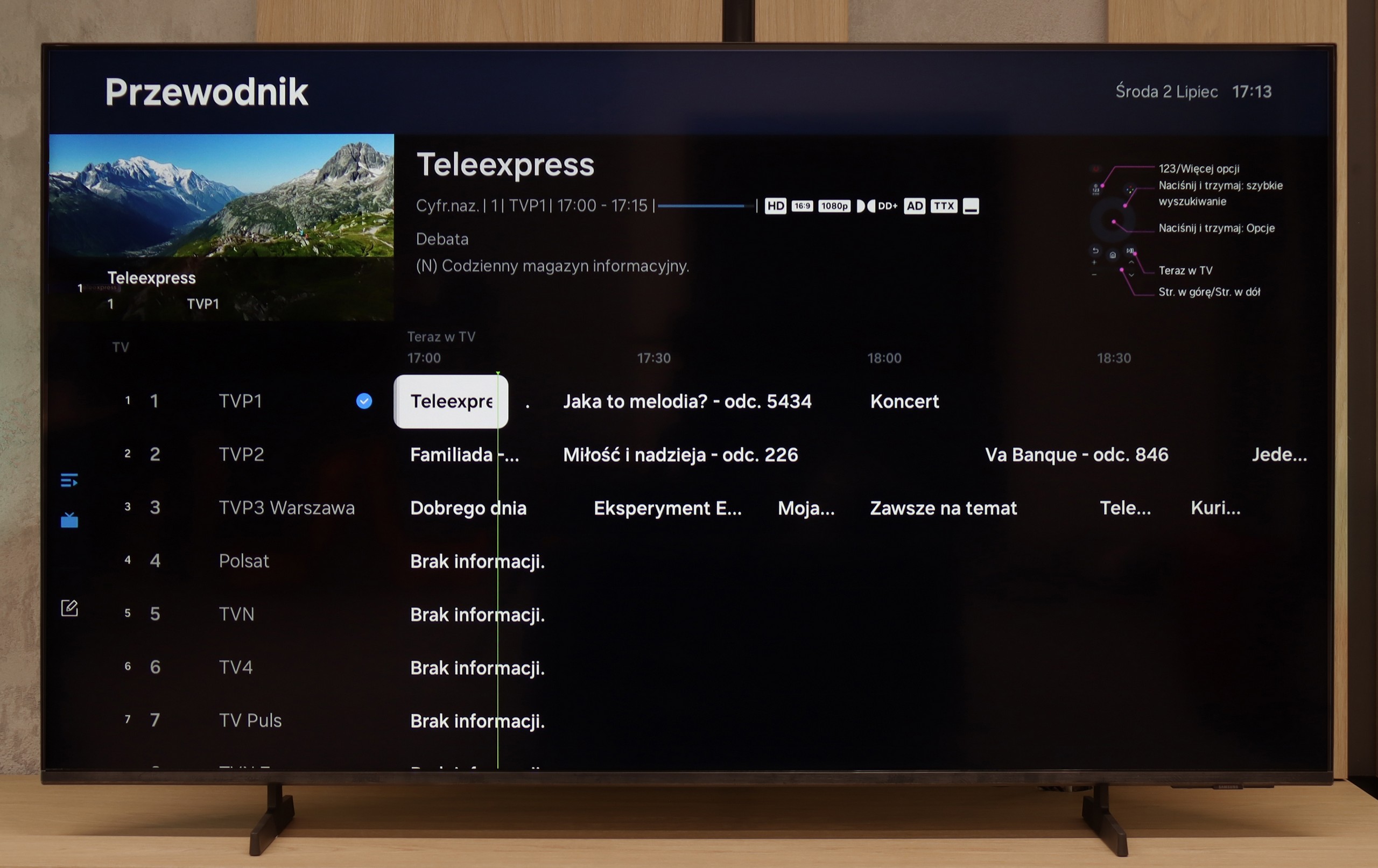
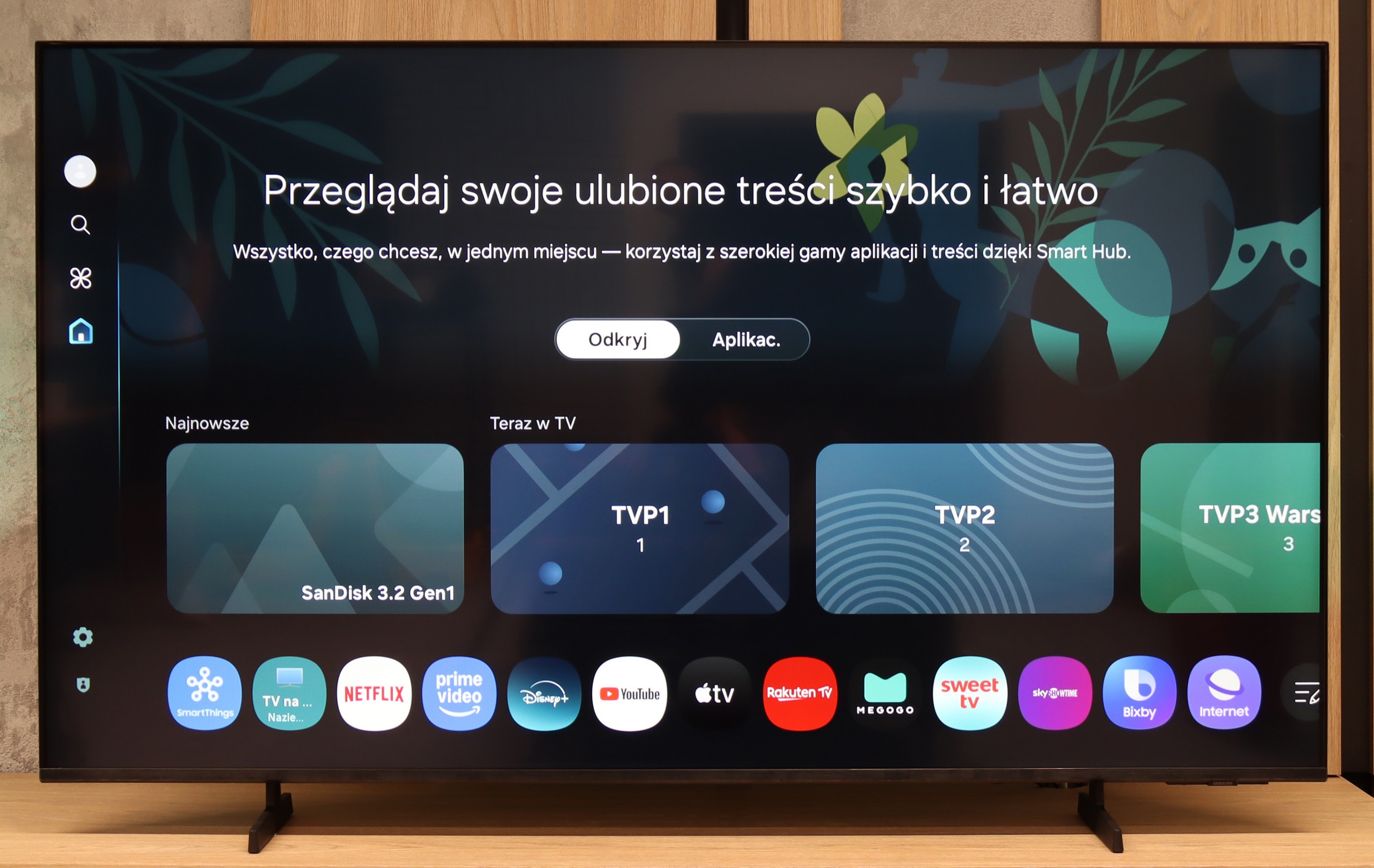
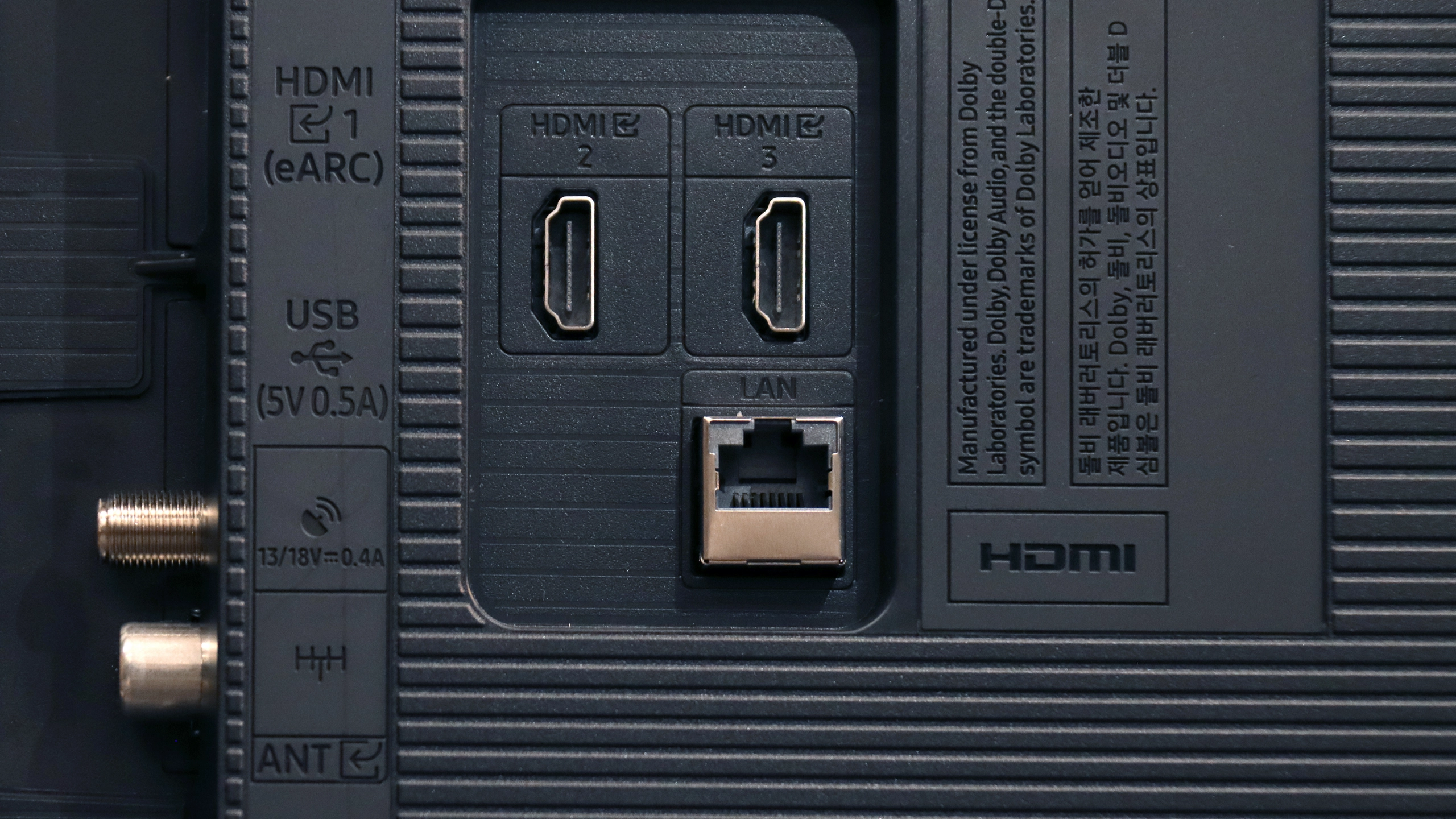
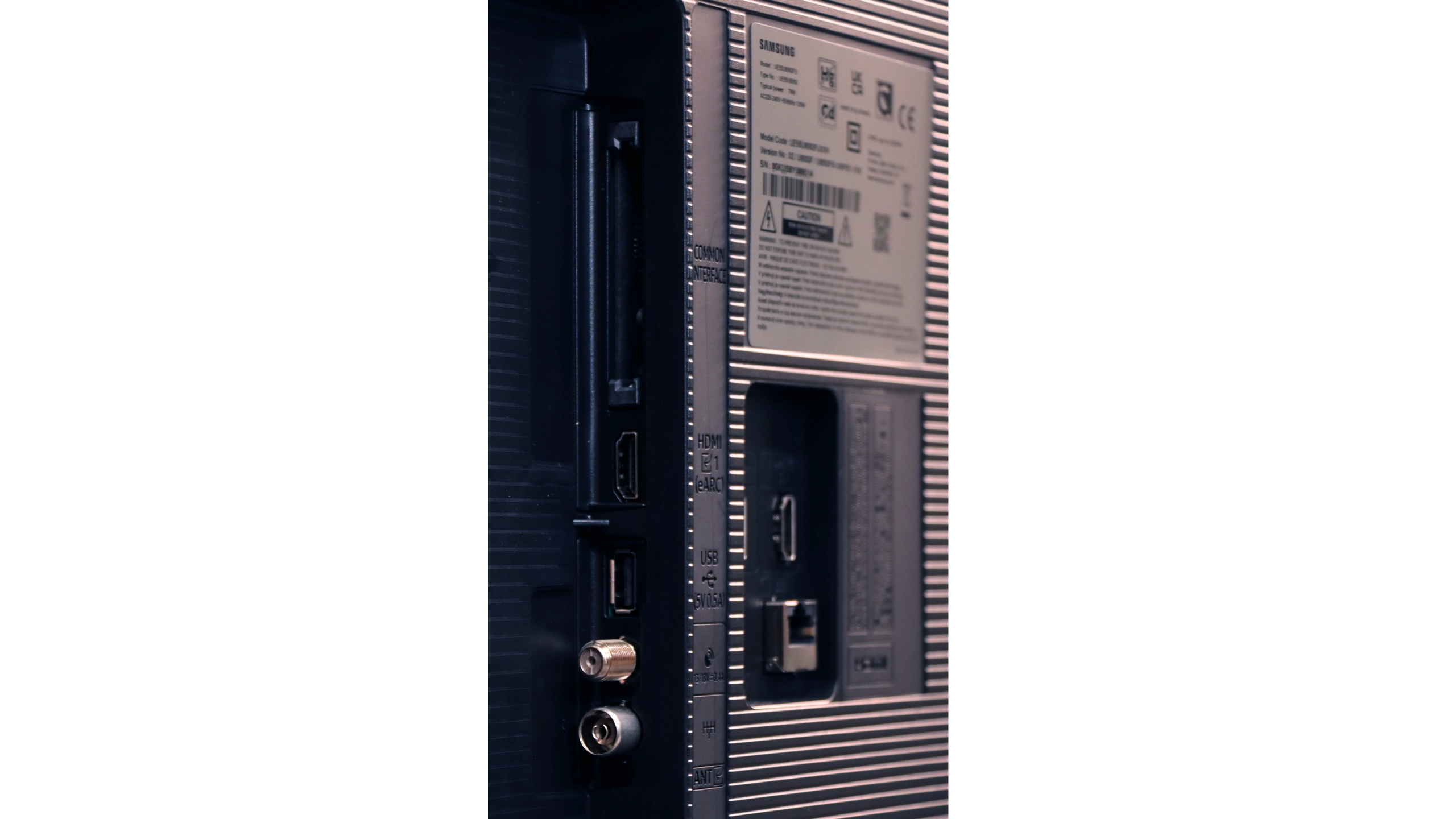
The Samsung OLED 48 S90D television offers a range of features that significantly enhance user comfort and make it the ideal device for entertainment in the comfort of your home. The Tizen system, which this model is based on, is a modern and advanced platform that provides users with an intuitive and smooth experience. Thanks to its user-friendly interface, navigation through apps and settings is quick and intuitive, making it easier for even those less familiar with technology to use the television. Tizen supports a rich set of applications, including all popular streaming services such as Netflix, YouTube, and Amazon Prime Video. A new feature for 2024 is also the availability of voice search in Polish. It's also worth noting the eco-friendly solar remote, which is not only environmentally friendly but also practical for everyday use. For example, the remote can control multiple devices connected to the television, so we don’t have to use multiple remotes. Additionally, the television supports AirPlay, enabling easy content streaming from Apple devices like the iPhone or iPad. The S90D OLED 48 also allows for the connection of various Bluetooth devices, such as mice, keyboards, or headphones, which increases its versatility and allows for personalised user experiences. As a result, users can easily adjust their settings to make the most of the television's capabilities. The only downside that can be pointed out is the lack of USB recording support. For some users, this may pose a limitation, especially in the case of wanting to archive their favourite shows or movies. Despite this, the S90D television offers many advanced features and technologies that make it an excellent choice for anyone looking for high-quality entertainment in their home.
Samsung U8092F – like all this year's models from this brand – runs on the Tizen operating system. The system itself is really well developed: we have access to many applications (although not all), a well-developed smart home support, and various extras, including exclusive Samsung applications. There are also features like AirPlay and Chromecast, which allow us to easily connect our phone to the television and stream multimedia.
Unfortunately, as this is Samsung's cheapest series in 2025, the manufacturer decided not to include a solar remote. In the package, we find a classic infrared remote, which visually resembles the newer version, but unfortunately lacks voice functions. As for typical “television” extras – the recording function and the PiP (picture in picture) mode are missing. However, a plus is the HDMI eARC, which allows for easy control of the included remote for devices like a decoder or soundbar – and it does indeed work seamlessly.
Playing files from USB
9.1/10
9.3/10
Supported photo formats:
Maximum photo resolution:

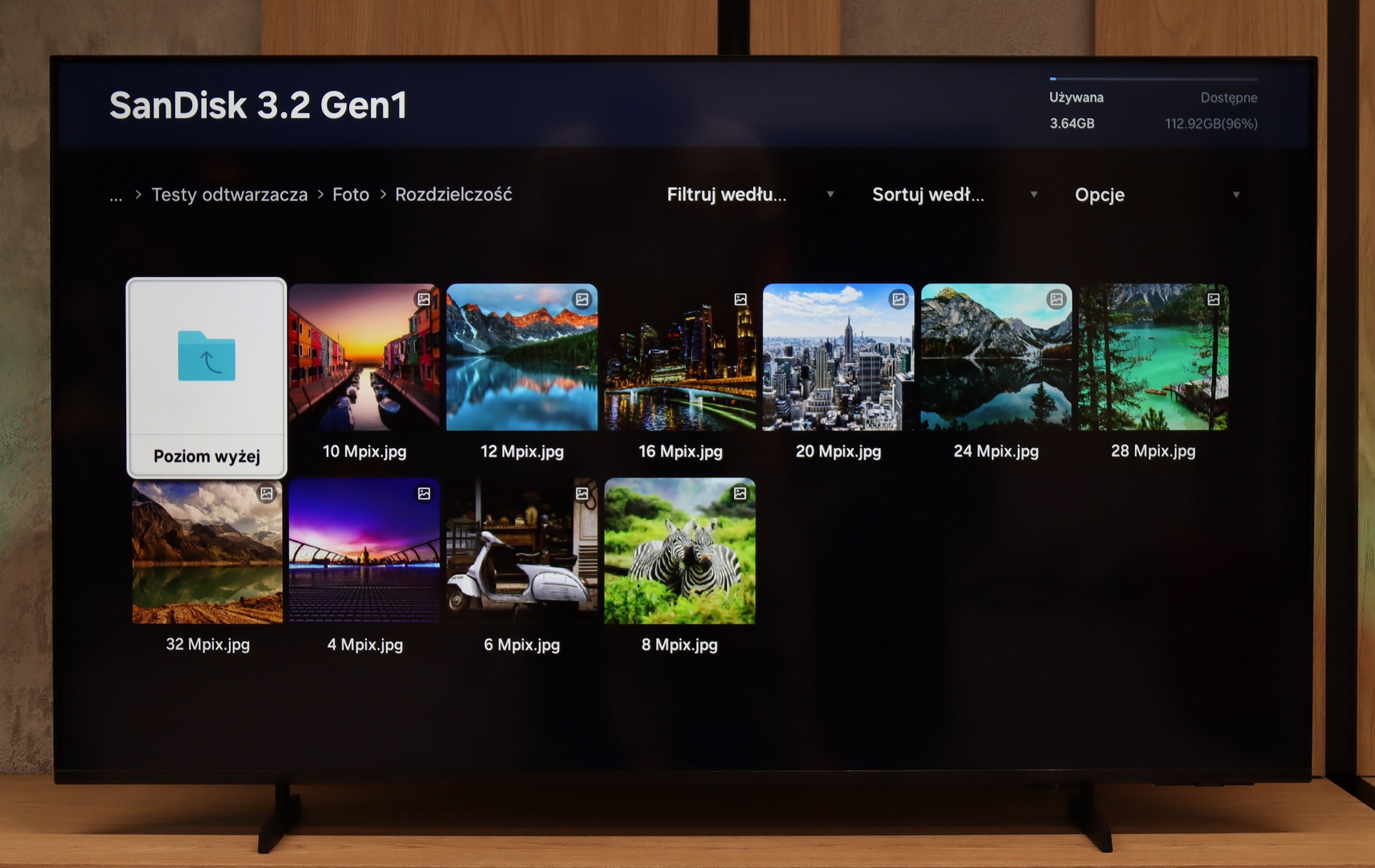
The Samsung S90D comes equipped with a built-in player that supports most popular video formats, allowing for convenient playback of films from various sources. The player also supports subtitles in Polish and enables users to customise the font colour, enhancing comfort while watching content with subtitles. In terms of photo formats, the television handles many of them, however, one of the few downsides is the lack of ability to play the popular PNG format. Nonetheless, the overall file playback capabilities of the S90D are outstanding.
Samsung U8092F handles playback of files fairly smoothly – the television supports most popular audio and video formats. Of course, it doesn't support Dolby Vision, but we simply won't find that in any Samsung model.
Some reservations can be made about the support for external text files – those that the user would like to add as subtitles to the film. During our tests, the television only played TXT files, and other formats, such as SRT or SUB, unfortunately did not work. This may not be a problem for everyone, but it's worth knowing. Perhaps it is an issue to be improved in the future with a software update for the television.
Apps
8.7/10
8.7/10














































Sound
6.8/10
5.7/10
- Maximum volume-81dB
- Dolby Digital Plus 7.1
- Dolby True HD 7.1
- Dolby Atmos in Dolby Digital Plus (JOC)
- Dolby Atmos in Dolby True HD
- DTS:X in DTS-HD MA
- DTS-HD Master Audio
The Samsung OLED 48 S90D TV delivers good sound quality, with clear and balanced audio. The sound is crisp, and the bass is well-defined, enhancing the viewing experience. Even at maximum volume, the sound remains clear, although the TV itself isn't very loud.
U8092F doesn't pretend to have a home theatre on board. We get a standard set of 2 x 10 W, which sounds fine but without much emotion, though with a light bass. For everyday viewing, such an audio setup is more than sufficient. We were pleasantly surprised that it managed to play a film with the built-in Dolby Atmos codec (JOC) – although, of course, we're not talking about true surround sound here.
Acoustic Measurements
No acoustic data
81dBC (Max)
75dBC


